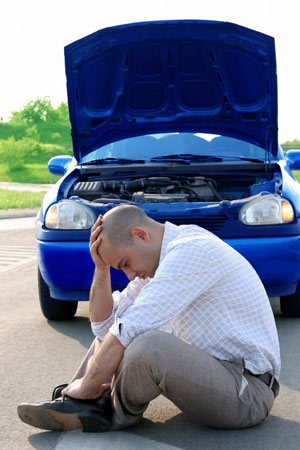Truck and Car Storage Checklist: Keep Your Vehicle in Tip-Top Shape
 If it’s time to store a car or truck—either because you’re going on a trip or your family has an extra vehicle that sits idle—you’re probably looking for a safe, clean storage location.
If it’s time to store a car or truck—either because you’re going on a trip or your family has an extra vehicle that sits idle—you’re probably looking for a safe, clean storage location.
If you want to prevent damage and ensure your vehicle will run smoothly when it’s time to take it on the road again, there’s a lot more you’ll need to do. To help, we’ve put together a quick-reference guide. Before storing your vehicle, make sure you’ve checked off every item on the following list.
√ Replace oil
Moisture and acids in old oil pit bearings and other engine parts while in storage, so replacing oil and taking steps to prevent and stop leaks is very important.
√ Stabilize fuel
Fill the tank 95% full with new fuel and add a high quality fuel stabilizer to keep it fresh for up to 12 months.
√ Check radiator fluid
Radiator fluid contains additives that prevent corrosion, so if yours is wearing out be sure to change it prior to storage.
√ Check transmission fluid
If it’s time to change it, you should do this before storage. (Transmission fluid contains anti-corrosion additives that deplete over time.)
√ Protect internal engine components
While in storage, engine oil drains away and can leave internal engine components exposed to corrosion-causing elements. Use a fogging oil to coat your engine with a protective layer of anti-corrosive compound.
√ Disconnect or remove the battery
Remove the negative battery cable to prevent the battery from draining. Better yet, remove the battery and store it in a cool, but not freezing, location and connect it to a trickle charger.
√ Protect the finish
Wash and wax, and use a breathable, form-fitting car cover.
√ Protect tires
If your car will be in storage for more than a year, use jack stands to remove weight from the tires and prevent flat spots, and apply a protectant to prevent rot.
√ Release the parking brake
For manual transmissions, leave the gear in neutral. You can use car stands or wheel chokes to keep the car from rolling, but do not apply the parking brake during storage, as it could become rusted to the brake drum.
√ Prevent mildew withIN tubes
Place moisture absorption or desiccant tubes in your car or truck’s interior and trunk to prevent mold and mildew growth.
√ Protect rubber
Apply a rubber protectant—303 products work well for this step—to weather stripping to prevent rot.
√ Protect your car or truck’s interior
Remove valuables as well as any food packaging that could attract vermin. Place mothballs in interior and trunk to repel rodents. Yes, it’s a lot to do. But you’ll be thankful you followed this checklist when your vehicle comes out of storage damage-free and ready to roll.





Hi, thanks for sharing. Many have experienced this one especially when storing their cars for too long . What can you advice for those who have been a victim of rodents attack? What you can recommend to have this one avoided? Thanks!